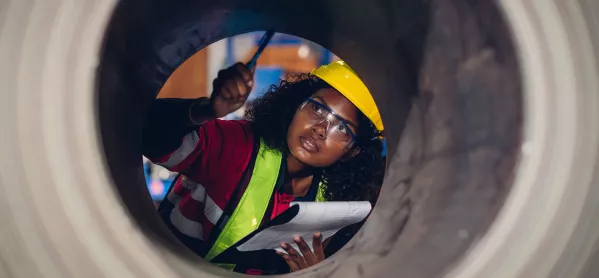DfE to spend nearly £5m researching risks of older school buildings

The Department for Education is planning to spend around £4.8 million on research and fieldwork looking into the risks posed by older school buildings.
A contract notice published this week estimates around £2.1 million will be spent on research aimed at improving the department’s understanding of future building safety risks and condition issues.
And the DfE said it will separately procure minor works to support fieldwork for the project - at an estimated value of £2.7 million.
Tes previously reported the research would focus particularly on post-war buildings constructed between 1945 and 1990.
Today’s contract says the research will involve “intrusive structural surveys” of a sample of buildings, along with modelling to map the prevalence of future structural risks.
Artificial intelligence will be used “to identify and learn specific types of defects experienced in older buildings”.
Research to inform policy recommendations
The research will inform policy recommendations on how to mitigate these defects, the contract notice states.
The intrusive surveys covered by the £2.7 million budget will include opening up buildings to access their structural frames, as well as the handling and removal of asbestos and testing of samples.
The contract, which follows the previously published early engagement notice, closes on 15 July. The research is currently expected to start from 27 September 2024 and end on 12 December 2025.
- Background: DfE to research risks posed by older school buildings
- PAC: School buildings and SEND need major funding
- Long read: Is the school buildings crisis solvable?
The research into older buildings follows many schools being told - just as the academic year was about to start last September - that they would have to close some buildings due to the presence of reinforced autoclaved aerated concrete (RAAC).
The DfE changed its guidance at the end of the summer holidays to advise schools to vacate all areas containing RAAC, despite previously advising them to avoid any critical areas.
RAAC was used most commonly in constructions between the 1950s and the mid-1990s.
DfE research plans
DfE chief operating officer Jane Cunliffe told the Public Accounts Committee (PAC) back in July 2023 that the department planned to research structural issues in school buildings.
She said at the time that the research aimed to look at about 200 buildings.
When the early engagement notice was published, PAC chair Dame Meg Hillier told Tes it was good to see the department “getting on the front foot in sourcing better-quality information”.
“Our committee has long called for the DfE to work up a better picture of the condition of our school estate, particularly when it comes to RAAC and asbestos,” she said.
The school estate
The DfE published guidance in April on managing older school buildings. The guidance set out several common construction types in the school estate along with things to consider in their maintenance.
For example, a type of temporary accommodation called a HORSA hut was stated to be beyond its expected lifespan and needed careful maintenance.
A report by the National Audit Office (NAO) last year warned that the DfE did not have sufficient information to manage critical risks to the safety of pupils and staff coming from school building deterioration.
The NAO estimated that 700,000 pupils were learning in buildings requiring major repairs.
Condition Data Collection surveys
The government is currently conducting Condition Data Collection 2 - a survey programme to understand the condition of the school estate and target funding.
Schools minister Damian Hinds said at the end of April that over half of state schools and colleges have been visited already, and the programme is due to be completed by 2026.
Unions told Tes in May that research into the condition of the school estate is “long overdue”, and must result in investment in the school estate.
For the latest education news and analysis delivered directly to your inbox every weekday morning, sign up to the Tes Daily newsletter
You need a Tes subscription to read this article
Subscribe now to read this article and get other subscriber-only content:
- Unlimited access to all Tes magazine content
- Exclusive subscriber-only stories
- Award-winning email newsletters
Already a subscriber? Log in
You need a subscription to read this article
Subscribe now to read this article and get other subscriber-only content, including:
- Unlimited access to all Tes magazine content
- Exclusive subscriber-only stories
- Award-winning email newsletters
topics in this article



